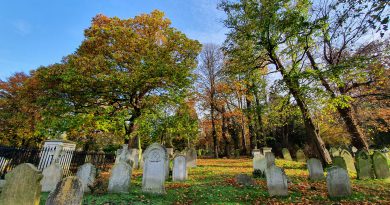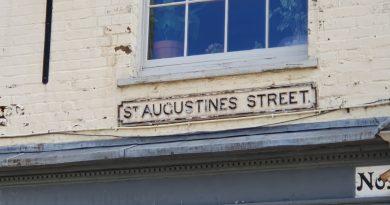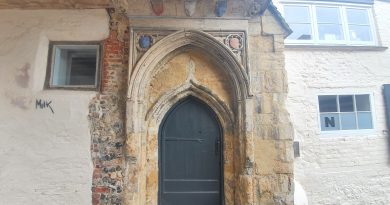Norwich – Romani DNA
This is the sign on the back of the Castle Quarter (or Castle Mall as I’m still calling it), opposite the Woolpack pub. It notes a discovery in the 1990s during the Castle Mall development when archaeologists excavated what transpired to be an eleventh century graveyard. It was important as it found Romani DNA, which is much earlier than anything else that had been discovered in the British Isles, around 500 years earlier than previous evidence.
There were 118 dental extractions from 59 skeletons which were sampled during the 1990s, although the results weren’t published until 2006. They took the DNA from tooth pulp, as the enamel on the teeth had helped to preserve it. Those buried had been Saxon Christian and the original report noted:
“If the rare TA haplotype found in ancient Britain instead suggests the presence of people of Romani ancestry in tenth century England, this is in surprising contradiction to historical evidence indicating that the Romani first left India—as mercenary soldiers or camp followers—at around AD 1000 (Hancock 2002). Some suggest that emigration from India could have been as early as the sixth century (Fraser 1992; Hancock 2002), and others have proposed much earlier routes via Egypt (see Kendrick 2000), but these theories are much less well supported.
One possible explanation would be if Romani women were enslaved by Vikings during trade expeditions to the Byzantine Empire, or formed liaisons with them during common association in Varangian army camps (in Byzantium) in the ninth and tenth centuries (Graham-Campbell 1994; Hancock 2002). These associations could also have been with Anglo Saxons, though known associations of Anglo Saxons with Varangian camps began only in the late eleventh century (Hancock 2002; Shepard 1973). Second generation Varangians are also known to have returned north (Hannestad 1970), and the mtDNA haplotype could have been introduced in this way. The gravesite at Norwich is typical of late Saxon, Christian sites with no grave goods and an east–west orientation, but this does not necessarily exclude Norse burial (Hadley 2002), and Viking artefacts were found nearby.”





